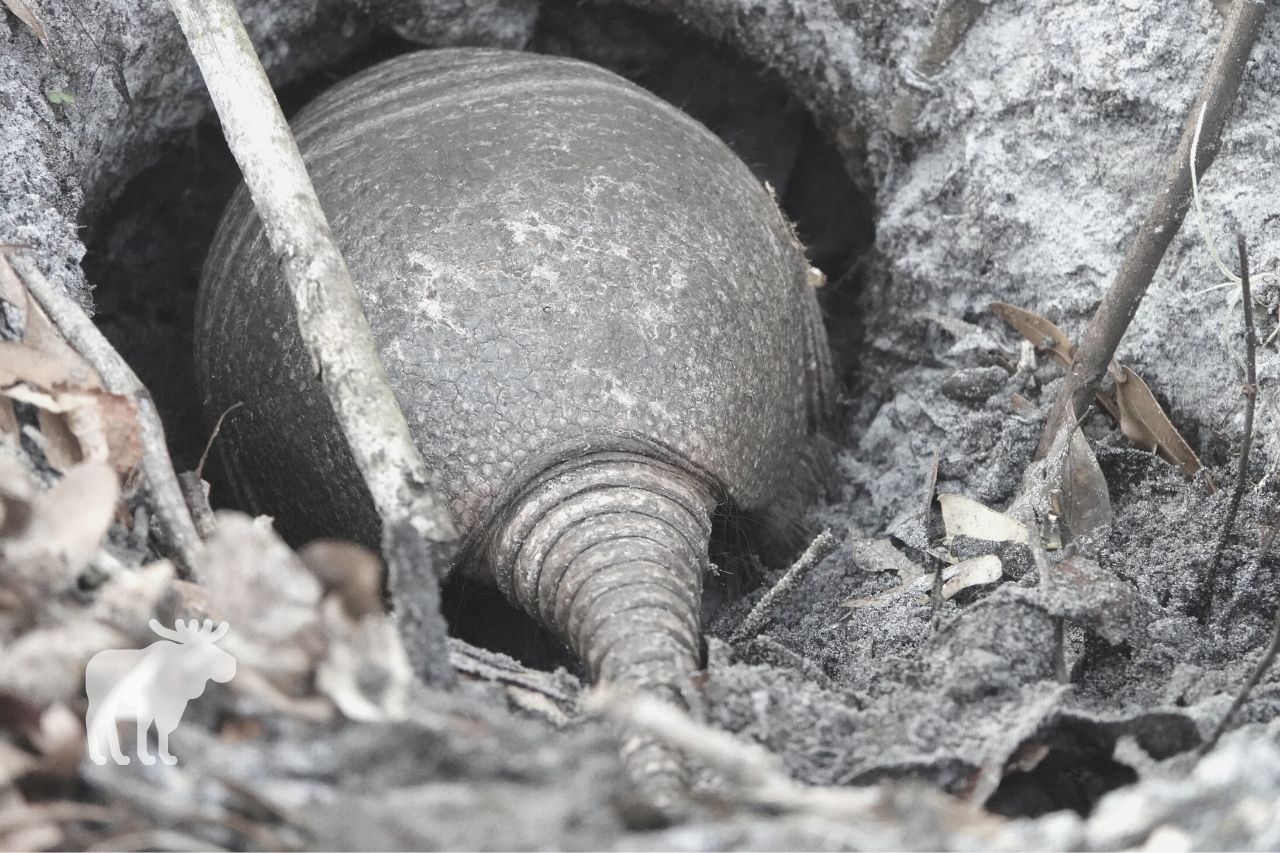Armadillos are generally harmless little animals, but if you’ve got a bunch of them digging up your flowers or leaving holes all over your yard, you may want to move them somewhere far away. But how can you do that? Keep reading to learn more about how to catch an armadillo.
What You'll Learn Today
How to Trap an Armadillo?

Trapping armadillos isn’t always an easy task. You may think it’s just a matter of setting up a cage trap and watching the little creature wander inside, but you may have to get a little more creative than that.
The thing about live animal traps is that they tend to attract other animals, such as raccoons and skunks, more readily than armadillos. This is largely because of how armadillos search for food and the types of foods they eat.
Armadillos usually dig for their food, scrounging up earthworms and other in-ground insects. They rarely eat anything they find lying on the ground, so any bait you use in a cage trap will likely be ignored.
What’s more, armadillos tend to avoid obstacles because they can’t see well, so they will walk around a live trap cage.
According to the University of Florida Extension, there are a few different methods you can use to trap armadillos more effectively. Let’s take a closer look at each of these methods in turn.
PVC Pipe
This DIY armadillo trap is cheap and fairly effective. You’re going to need a wide diameter PVC pipe, about 6 inches, or roughly the same width as the exit hole to the armadillo’s burrow.
Wedge the section of pipe inside the end of the burrow, and check the pipe often, especially during the afternoon and evening. Adult armadillos will get stuck in the pipe as they try to leave the burrow.
As soon as you find an armadillo in the pipe, you’ll want to remove the pipe from the hole and relocate the armadillo. To remove the armadillo from the pipe, firmly grip its tail and carefully pull it backwards out of the pipe.
Netting
To use this method, you’ll want some sort of netting that is strong but soft and flexible. Place the netting loosely over the burrow exit hole, making sure there is plenty of excess; you’re not trying to keep the armadillo in the burrow, you want it to exit and get tangled in the netting.
Again, watch the trap closely and remove the armadillo as soon as possible from the netting. The longer it is left, the more it will struggle, and if it gets too badly tangled, it may get the netting wrapped around its airway and suffocate.
Bucket
One way to trap an armadillo is to create a “hole” for it to fall into. You can do this using a large bucket.
Your bucket should be at least 5 gallons, preferably larger. Dig a hole large enough for the bucket near the armadillo’s burrow; if there is a visible track showing the direction the armadillos usually walk when leaving the burrow, dig the hole and place the bucket along this path.
Bury the bucket and cover the opening with newspaper and dirt, sticks, leaves. This will disguise it enough so that, when the armadillo leaves the burrow, it will walk over the opening of the bucket and fall in.
Other Trapping Methods
Though using live animal traps doesn’t typically work as well for armadillos, you may be able to use them fairly successfully as long as they are placed near burrow exits or along known armadillo travel paths. Armadillos tend to travel along the same paths every day, so look for animal trails that have been worn in the grass.
Use a medium-sized cage, preferably the same size as you would use for trapping raccoons. It is best to place leaves or soil over the bottom so the armadillo doesn’t feel the bottom of the cage as it walks inside.
Where Do Armadillos Hide During the Day?

Armadillos create underground burrows; they hide and sleep inside these burrows during the day.
To discourage armadillos from creating burrows in your yard in the first place, try putting down chicken wire. Of course, it might be difficult to chicken wire your entire yard, so pay attention to where armadillos have burrowed in the past and place chicken wire over these areas.
When is the Best Time to Catch an Armadillo?
Armadillos are nocturnal; they usually leave their burrows late in the day to go and search for food.
Since armadillos are most active at night, it’s best to set your traps in the afternoon while the armadillos are most likely sleeping in their burrows. Check the traps frequently as the afternoon and evening progresses; this is especially important after dark.
Once you’ve caught one or more armadillos, relocate them as soon as possible.
What is the Best Bait to Catch an Armadillo?
Some pest control specialists advise against using bait for armadillos, as the bait may attract other animals such as raccoons or opossums instead.
However, if you do want to bait your trap, the best baits to use are insects that armadillos would dig out of the ground–earthworms, grubs, or mealworms. You may want to place a bunch of these insects in a nylon stocking and tie it off before setting it in the trap.
Other good baits for armadillos include fresh or spoiled fruits, small lizards, and scorpions. If you know the armadillos are most active in a certain part of your yard, see if you can figure out what is attracting them there and use whatever food source you find there as bait.
How to Catch an Armadillo By Hand?
It is possible to catch armadillos by hand, but this is not recommended for the untrained or inexperienced. If you’re going to do it, you might want to watch the following video first to get an idea of the challenges you’ll face as well as the proper ways of holding and handling armadillos.
Is it Safe to Pick Up an Armadillo?
Armadillos are relatively harmless, but it’s best to have proper training before attempting to pick one up. Armadillos have claws and will attempt to scratch anytime they feel trapped and threatened.
Armadillos will struggle quite a bit when you first catch them but may calm down after a moment or two. You may be tempted to loosen your grip, but if you do, the armadillo will feel the release in pressure and will instantly spring away and escape.
Armadillos can be difficult to hold onto and are very strong, but you want to make sure you’re not squeezing too tight when holding onto one. This is one of the things that can be hard to judge if you don’t have the proper training or experience.
If you don’t want to use a trap, it may be best to leave hand-catching your armadillos to the professionals. They have the necessary training to know exactly how to catch and hold onto these squirmy little animals.
Conclusion
Though live animal traps aren’t the best way to catch armadillos, there are several methods that work quite well. These methods include placing PVC pipe in their burrow holes, covering their burrows with a net, and burying a bucket for the armadillo to fall into as it leaves its burrow.
It is not easy to catch an armadillo. They know how to hide and run away.